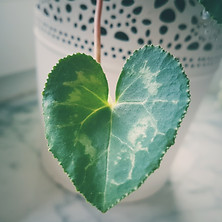

About
What is Art Therapy?
Art therapy is an evidence-based intervention which makes use of the creative process of making art to improve a person’s overall well-being. The use of diverse art materials for painting, drawing, collage, sculpting etc. are aimed to facilitate reflection, awareness and healing.
Sometimes, we don't always have the "right" words to describe how we feel. Engaging in art therapy can help you express your emotions with an abstract watercolour painting, a simple clay sculpture, or a collage of images.
Art therapy is about the process of creating something from within, rather than worrying about what the end product will look like. You are free to create art without the fear of being judged - all creative expressions are valued.
With the help of an art therapist, you can explore your thoughts on what it was like for you to create an artwork and discover personal meaning attached to it – helping you achieve insight and increase self-awareness. The art therapist provides a safe space for you to process any feelings that might come up.
Frequently Asked Questions about Art Therapy
No, you don’t need to be experienced in art to benefit from art therapy. One of the most common misconceptions is that art therapy is for artistic people when in fact,
You will engage with the art materials differently than one would in a typical art class. The focus will be on the process of creating your artwork. The outcome of art therapy has little to do with your skills in art.
no artistic skills are needed at all.
Art therapy is different from art class in many ways. You may learn new techniques on how to use different art materials but the process of creating art is totally different. In art class, the art teacher’s goal is to teach you skills so you can produce a technically proficient artwork which you are often graded for.
In art therapy, the art therapist’s goal is to help you improve your general well-being by focusing on the process of creating art. You will not be judged by the outcome. There is no wrong or right way when it comes to expressing yourself in art therapy.

In art class, you learn the technical skills on how to make a good picture. In art therapy, you may learn more about yourself and how art can be used for self-reflection.
Checking In
The session usually begins with the art therapist checking in with you. If you are a new to art therapy, you might discuss personal goals and aims for future sessions.
Sessions will vary depending on your needs and goals. The structure we present is a guide to what you can generally expect in an art therapy session.
Art-Making
The art-making aspect will be different for each person. Sometimes, you will be working with a theme (ex. strengths, gratitude) and other times it may be unstructured where you are free to create as you feel.
Reflection
The last part is a conversation of what the art-making process was like for you. You could talk about things like what came up while you were creating or what your artwork means to you.
Art Therapy for Older Adults
Living With Dementia

How art therapy can support people living with dementia
-
Improve focus and concentration
-
Facilitate non-verbal expression
-
Provide sensory stimulation
-
Create meaningful moments
-
Celebrate personal identity through their unique expression
-
Provide structure and ritual
-
Improve their mood by engaging in purposeful activity
-
Offer positive reinforcement and a sense of accomplishment
-
Encourage fine motor skills and movement
-
Improve wellbeing in aged care
-
Outlet for storytelling and reminiscence
Are you interested in art therapy for your loved one living with dementia?
to find out how we can best meet their needs.